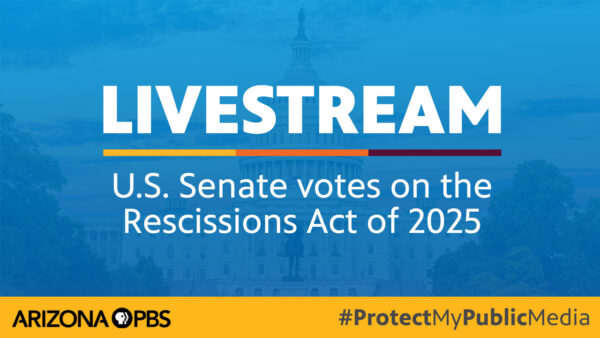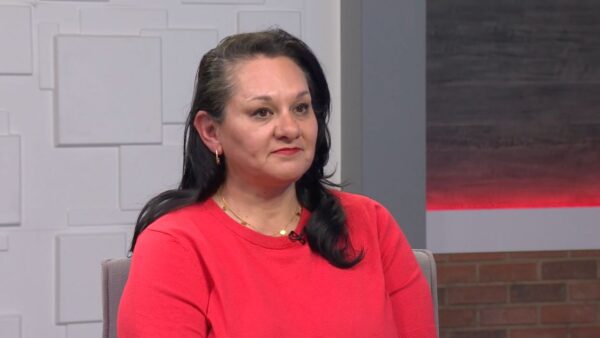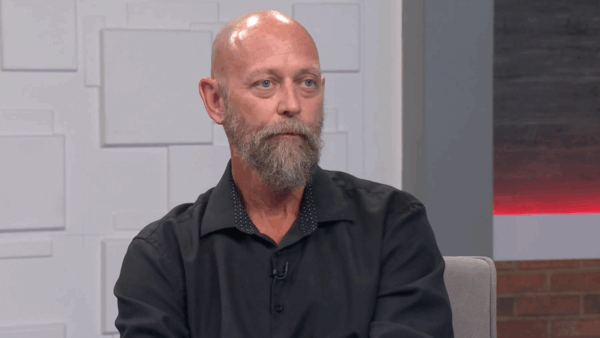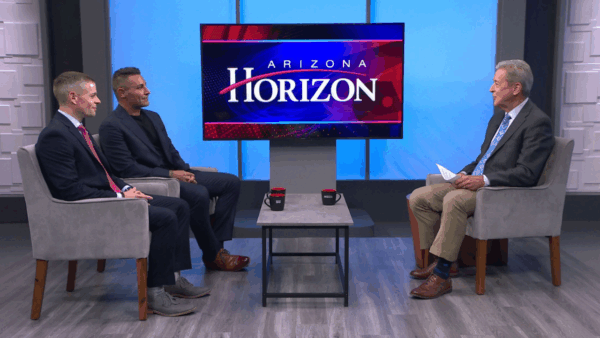The Arizona Department of Water Resources has released a report about Arizona’s water future. “Arizona’s Next Century: A Strategic Vision for Water Supply Sustainability” assesses current and projected demands and water supplies and provides potential strategies that will help Arizona meet its future water needs. Michael Lacey, the director of the Arizona Department of Water Resources, will talk about efforts to start putting parts of that plan into action.
Ted Simons: Our continuing series on "Arizona's Future" looks tonight at the state's water needs. The Arizona Department of Water Resources recently addressed current and projected water supplies and demands, along with strategies to help Arizona address future water issues. Michael Lacy is the director of the State Department of Water Resources. Thank you for joining us.
Michael Lacy: Good to be here, thank you.
Ted Simons: What exactly did you look at, what exactly did you find?
Michael Lacy: The report is what we called a strategic vision for water supply sustainability. We looked at the state as a whole and the adequacy of the existing portfolio of water supplies we have against the projected demands for the State.
Ted Simons: Arizona not facing an immediate water crisis. Correct?
Michael Lacy: Correct. There are challenges to be met.
Ted Simons: Okay. Not facing a water crisis in the near future, correct?
Michael Lacy: Correct.
Ted Simons: All right. But there does seem in the report a long-term imbalance, I think the report used those word, between supply and demand. How long term, how much of an imbalance?
Michael Lacy: Once we reach that imbalance we will be there forever unless we develop additional water supplies to meet that demand. So the report looks at about 20 to 30 years as the time frame where we think our economic development will outstrip the available supplies that we have. So that's sort of the time frame we believe augmentation needs to happen to bring additional supplies to the state.
Ted Simons: And as far as these projects' demands for water in Arizona, is it agricultural?
Michael Lacy: We did not look at moving water from one sector to the other. We didn't look at moving agricultural supplies to urban supplies, for example. We tried to look at all water use sectors at their current use projects. Largely they are in the industrial and musical sectors. We do see them in the picture in the long run.
Ted Simons: If additional supplies are needed where will they come from?
Michael Lacy: Some of those will be developed entirely within the state through enhanced management of rainwater harvesting. And additional conservation measures reuse of reclaimed water, but ultimately we projected that we needed to bring in water from outside the state. And we're looking at seawater desalination as a concept.
Ted Simons: That concept used to be something of a pipedream back in the old days. People are not laughing at that any more.
Michael Lacy: It's in practice at many scales all over the world.
Ted Simons: How long before something like that could be up and operational and impacting Arizona?
Michael Lacy: It could be developed within the next decade, but we don't need that supply that soon. We need to put time and effort into building the case for developing those supplies and striking the deals to make that happen.
Ted Simons: You've mentioned reclaim and reuse. How far are we along now, how far do we need to go?
Michael Lacy: We are among the leaders of the world in reuse of reclaimed water. Roughly 80% of the reclaimed water we produce gets used in some manner. We're doing a very good job of it today. There are pockets of the state where we could do a much better job. It is a supply that grows with additional supplies. If we develop other water supplies reclaimed water will be generated by that and we think that this imbalance can be met by roughly 50% of this projected imbalance by an aggressive reuse program.
Ted Simons: When we talk about water banking and aquifers and these sorts of things, again, where do we stand on those now? Are we moving aggressively enough towards those things?
Michael Lacy: We have been very aggressive in our water banking measures. There are a mainline and a half in storage today because of our recharge program. It's largely been Colorado River water that's been stored, so we may shift from a storage era to one of recovery. That'll really change the dynamic of how our programs have worked.
Ted Simons: Politics is a moving target and moving goalpost, but the drought is also impacting things. Again, that's an equation that's moving a little bit but not in the right direction.
Michael Lacy: Well, it did last week in a somewhat spectacular fashion. We are in our 15th year of draught within the state and the Colorado River basin. Whether that's a permanent shift in the way these systems operate or whether it's a temporary condition is yet to be told. But the supplies themselves, we do a very good job of managing those splice internally within the state. Our Salt River Project deliveries remain at full allocation and our Colorado River supplies for now are basically fully delivered.
Ted Simons: I mentioned the drought because people have been impacted by that the most. People are consistently saying Arizona needs to do something, we are threatened. It's not a good situation that we're in. Yet again, we're not facing an immediate crisis or one in the future. When people say that, are they wrong?
Michael Lacy: No, they're not. Our programs have been very effective, the conditions we find ours in are a function of how well we have done. That water will sustain us as we move into extended drought.
Ted Simons: And you mentioned again, back to the ideas of additional water supplies, if the growth continues as we've seen for the past few decades, can there be enough fo that additional water?
Michael Lacy: We have our assured water supply program that really is a governor on that growth. We require 100 years' worth of a short supply to develop subdivisions within the active management areas. So much of this projected growth legally cannot happen unless we find the water supplies and allow it to happen.
Ted Simons: We hear concerns of people building wells and taking water out of certain rivers upstream where they shouldn't be or where you'd rather them not, how does that play into the equation?
Michael Lacy: It is part of the picture. If we live in an era of shortage those types of disputes will continue and escalate. If we develop additional supplies many of those arguments might able to increase the size of the bucket for all of us.
Ted Simons: You've got state and federal laws, land, geography, there are a lot of variables at play here. Are we ready to tackle that?
Michael Lacy: We are tackling and we will continue to do so.
Ted Simons: Go ahead, please.
Michael Lacy: We're putting together an effort to advance the strategic vision. We're actually putting together a group to kind of cement some of these ideas and put more structure to the recommendations that the department this put together in this program. We're actually doing that with the assistance of the Morrison Institute. We're going to put together a group recommended by the Governor. It's going to be co-chaired over the surface. We are going to prioritize recommendations that we have here and sort of move this forward. And create some order for the next governor to step into the water arena without drowning in it.
Ted Simons: The goal would be to make sure this one didn't gather dust on a shelf.
Tuesday on "Arizona Horizon" it is primary election day. We will have results and analysis on our 10 p.m. show, a special "Vote 2014" look at 10 p.m. right here. For any more information on what we're doing in the past or in the future, check out Arizona PBS.org/horizon. That is it for now, I'm Ted Simons. Thank you so much for joining us, you have a great evening. Captioning Performed By LNS Captioning www.LNScaptioning.com
Michael Lacey:Director, Arizona Department of Water Resources;






















